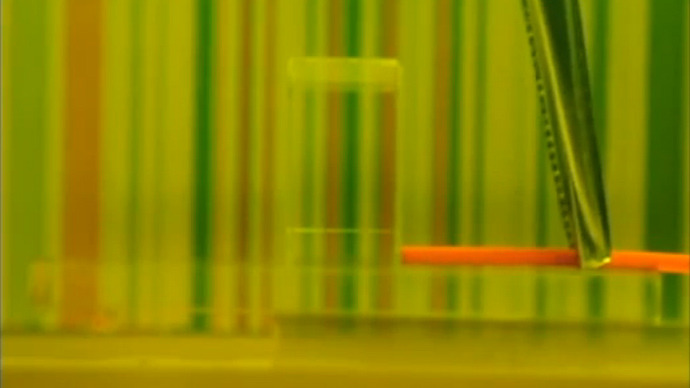Scientist presents 'invisibility cloak' in California (VIDEO)

At a US tech conference, a scientist unveiled a small ‘invisibility cloak’ that causes objects behind it to mysteriously ‘disappear’ – similar to the magic garment worn by Harry Potter at the Hogwarts School of Witchcraft and Wizardry.
The device more closely resembles a small box than a cloak, but makes objects behind it appear to completely vanish. Using science to bend light around an object, the inventor found a way to conceal items placed behind his device.
Dr. Baile Zhang, an assistant professor of physics at Nanyang Technological University in Singapore, unveiled his invention at a TED conference in Long Beach, Calif, where he explained that he constructed the invisibility machine “just for fun” after coming up with the idea in 2010.
But his hobby quickly became known as a technological breakthrough: what the 31-year-old electrical engineer constructed for ‘fun’ has instilled excitement among those hoping that the technology can be used to create a life-sized invisibility cloak.
“Some guy invented an invisibility cloak… Harry Potter is finally coming true,” wrote Twitter user @MarissaaRussell.
But creating a life-sized cloak would prove more difficult: Dr. Zhang’s disappearing box was developed by attaching two pieces of calcite, a carbonate mineral that can bend light. While it is possible to create a larger version of his invention, it would not be feasible to create a garment out of the dense, colorless mineral.
For now, the scientist is working on creating a larger version of the invisibility box, one that is “as large as possible”, he told Boing Boing.
Still, the object has become the talk of the conference. A YouTube video shows Zhang placing the ‘cloak’ in front of a Post-it notepad, causing a section of it to instantly disappear. The box itself remains near-invisible as it flawlessly conceals the tiny object.
While Dr. Zhang’s invention has stirred up excitement about the prospect of a life-sized magic trick, he is not the first to work on such an object.
Scientists at London’s Imperial College, Duke University and the University of Texas are working on similar designs. Scientists for the first time succeeded in “cloaking” an object in 2006, after which the Imperial College researchers laid out their theory for others to copy. In 2011, a physicist at the University of Texas Dallas successfully created a small invention that uses carbon nanotubes to make objects behind it disappear. At Duke, inventors used metamaterials to create a tiny cylinder that bends electromagnetic waves and makes objects vanish.
But for those wishing to make themselves disappear in front of friends or family, take note: the illusion only works at a certain angle.
“It’s like the card people in Alice in Wonderland,” Imperial College Professor David Smith told BBC in 2012. “If they turn on their sides you cant see them but they’re obviously visible if you look from the other direction.”












